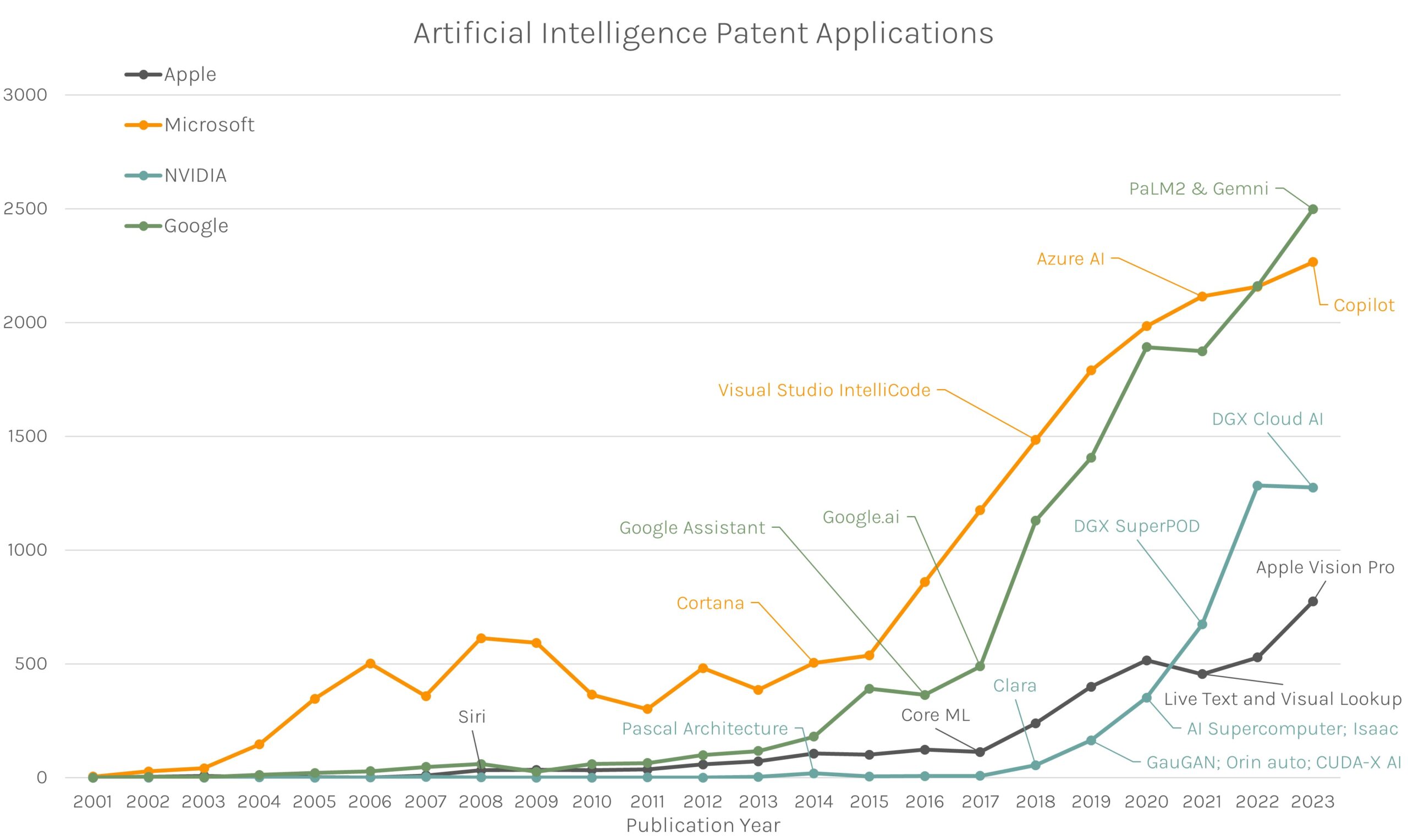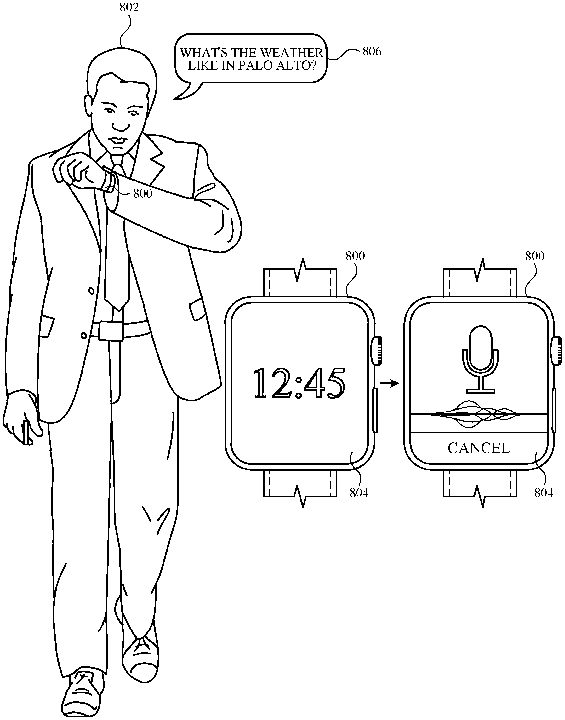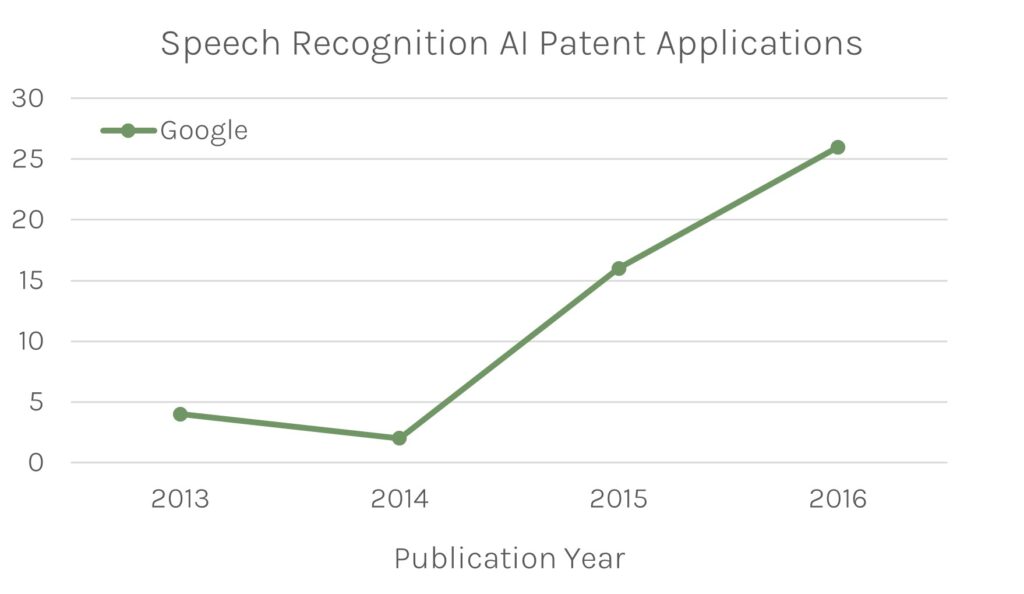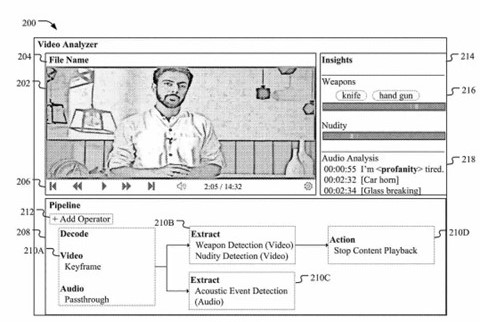29/10/2024
On 10 June 2024, Apple stock reached a record high after the announcement of new AI features. The markets seemed surprised by the new technology. However, was this information effectively already in the public domain through the patent literature? Is this resource not being properly used?
Apple are not alone amongst Big Tech in deeply integrating machine learning, natural language processing and AI across their product range, and indeed, commentators consider Apple to be behind Google and Microsoft in this regard.
In this article, we try to show whether or not the patent literature can predict commercialised products, particularly in relation to machine learning, natural language processing and AI. We look in-depth at Google and Apple specifically.
On the one hand, there is undeniably phenomenal innovation in this space, which one might expect to patent. And while the contents of patent applications usually only become public 18 months after they have been filed, one can expect a lag from invention to commercialisation. On the other hand, there are many reasons why a company might not seek patent protection in this space. Companies may prefer to keep their tech as a trade secret. Companies may prefer not to file patent applications as there are issues with patent eligibility in this space. Furthermore, Big Tech may be filing patent applications in such great volumes, that it may not be possible to distinguish from the patent literature between next-gen products and far-off blue skies speculation.
Patent Publication
Patents are published 18 months after the earliest priority date, which means details about a company’s technology may be outdated by the time they become public. This lag can affect a company’s competitive advantage and the relevance of the disclosed technology.
AI technology evolves rapidly, often within months or a few years. The 18-month publication timeline can make patent disclosures seem slow compared to the fast-paced advancements in AI, potentially rendering the published information outdated.
The delay in patent publication allows competitors to gain insights into a company’s R&D focus, but it can also lead to strategic disadvantages if the technology described in the patent has already evolved.
Companies must carefully manage the timing of patent filings and public disclosures to align with their development cycles. A well-rounded intellectual property strategy, including patents and confidential measures (trade secrets), is crucial to maintaining a competitive edge in fast-moving tech sectors like AI.
As shown below, patents can provide valuable clues about a company’s technological focus and potential future products, although predicting exact announcements is difficult due to publication delays and the rapid pace of innovation.
Patent Trends in AI

The mean number of patent applications published is significantly higher in the years preceding announcements compared to non-announcement years for all companies.
T-tests for Apple, Microsoft, and Google show statistically significant differences between the preceding announcement years and non-announcement years (p-values < 0.05).
Finally, positive correlation coefficients for all companies suggest a positive relationship between the number of patent applications and the years preceding announcements.
The data thus suggests a notable trend where an increase in AI-related patent applications precedes major AI technology announcements. This pattern implies that these companies ramp up their innovation and patenting activities in anticipation of launching new AI technologies or services, reflecting their strategic investments in R&D to support these advancements. The data may be enough to consider that observing patent publication trends can provide valuable insights into upcoming tech development cycles and potential announcements.
More in-depth look at particular examples
Apple
In their most recent announcement, in June 2024, Apple announced improvements to Siri’s awareness of personal context. Apple highlighted that their new Apple Intelligence will enable Siri to deliver intelligence that’s tailored to the user. However, in the years leading up to their most recent announcement, a series of Apple’s published patent applications suggested a step towards a more sophisticated and contextually aware Siri. One example, US 2024/135251 includes a patent application for an AI controller that “procedurally tailors itself to an application”. This application published in April 2024. The system described in the patent application involved monitoring “state information” related to a user’s activity within an application, which suggested that Apple was already developing ways to make their virtual assistant more contextually aware of what the user is doing ahead of their June 2024 announcement.

Another example includes an application directed towards an automated assistant’s ability to understand and respond to user intents by leveraging metadata from the user’s past experiences. The disclosed assistant is capable of delivering personalized and context-sensitive responses by analysing and integrating information from various aspects of a user’s activities and media. Apple’s development of a more contextually aware Siri seems to have been published in the patent space well before their public announcement.
Figure 2 – Figure from one of Apple’s patent applications which seems to show a more contextually aware Siri

However, some examples of Apple’s product features were not published in patent applications till after they were first publicly commercialised. For instance, the “Raise to Speak” function was first implemented on the Apple Watch Series 4 which was first announced in 2018. This feature enables a user to raise their wrist and speak directly to Siri. However, US 2019/0339784, which is the first patent publication covering this feature, wasn’t published until November 2019. Similarly, Apple’s Animoji Live Face Tracking was first announced in September 2017, but the earliest patent publication of this feature was EP3404659 published in November 2018.
Figure 3 – Figure from one of Apple’s patent applications published after the announcement of “Raise to Speak” functionality
This highlights that the 18-month publication timeline can potentially render the published information outdated.
In contrast to Apple, Google appears to adopt a more “blue sky” approach and it seems harder to directly map patent applications to new tech announcements. Google often integrates technologies from a vast array of acquired startups, making it less reliant on internally developed patents for innovation. Additionally, Google’s patents may cover broad, foundational technologies that evolve over time, rather than specific, immediately implementable features, further obscuring direct correlations with new product releases. For example, the Word2vec model was introduced by Google and first published in US patent No. 9,037,464 in May 2015. This foundational technology has had widespread impact, serving as a building block for numerous natural language processing applications, which exemplifies how Google’s foundational technologies can influence a broad range of future developments rather than being tied to a single, immediately recognizable product or feature.
Nevertheless, Google’s filing trends can still provide some insight into their upcoming development cycles. For instance, AI Patent applications published in the field of speech recognition (classification code G10L 15) grew 400% ahead of Google’s launch of Google Assistant in May 2016.

Key features of Google Assistant include “hotwords” to perform certain tasks, which were disclosed in US20150161990A1, first published in 11 June 2015.
While the rise in speech recognition patents and the details of specific patents provide useful insights into technological advancements and areas of focus, they don’t necessarily offer precise predictions about specific product announcements. They do, however, indicate that a company is likely working on innovations in those areas, which could eventually lead to new products or features.
A look to the Future
Patent and patent application publication trends can offer valuable insights into the timing and focus of AI-related innovations. However, they cannot always predict specific product announcements. For Apple, certain patents hinted at upcoming developments before public announcements. Google’s broader, exploratory patenting approach makes it challenging to directly correlate patents with immediate product launches. Thus, while patent literature can serve as a useful tool for anticipating tech trends, it is not a definitive predictor of commercialised products.
With this in mind, patent publications have to be taken with a pinch of salt. Microsoft recently filed a patent application (publication No. US 2023/0409654) for a technology that enables users to create and run artificial intelligence (AI) pipelines on their own devices, using web browsers. The patent, which was published in December 2023, describes systems and methods for on-device, in-browser AI processing, which offers several advantages over existing AI processing solutions, such as improved performance, data privacy, insight generation, and AI pipeline visualisation and modification. However, there is yet to be any mention of this pipeline technology in any official public communications. We wonder whether it will soon appear at the next Microsoft Build conference.

This content is for general information only. Its content is not a statement of the law on any subject and does not constitute advice. Please contact Reddie & Grose LLP for advice before taking any action in reliance on it.



